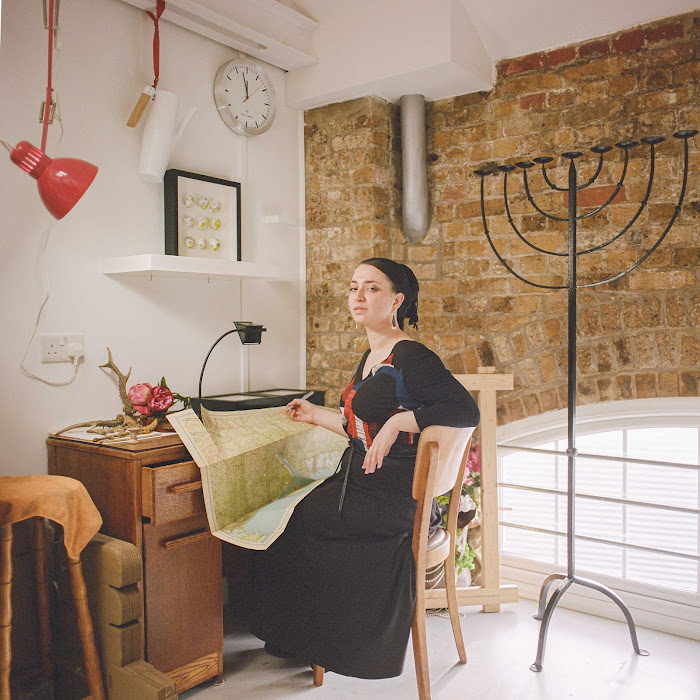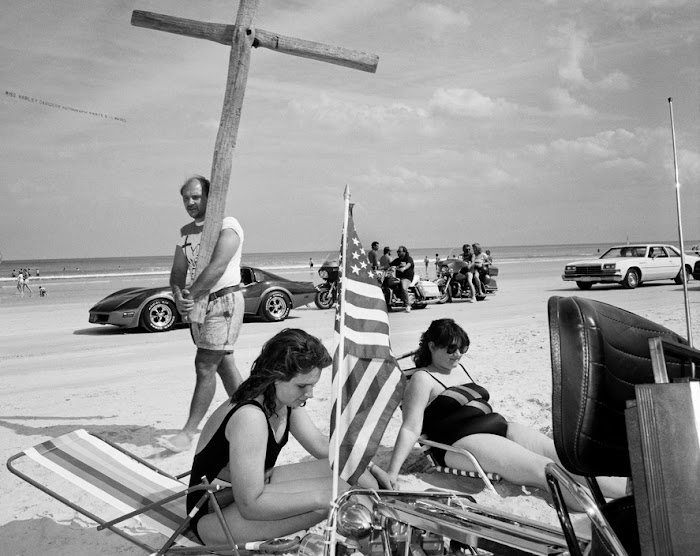"as a child of first generation immigrants, there is always a point in your life where you feel like you don’t fit in anywhere; not in the country you were born in nor in the country you were raised in. i felt like i was too moroccan to fit in as a belgian and too european to fit in as a moroccan, and this is something that almost every immigrant has to deal with. wherever you want to live on this planet, you will always feel like an outsider...

... as a result, we do our very best to be accepted and to be “normal”, consciously or subconsciously. luckily, at some point, i didn’t want to do that anymore. i started questioning (and still do till this day) the concept of “normal” and all the standards and rules that society imposed on us. since then, everything changed for me: the way i look at things, the way i act, the way i work, the way i think creatively… my work is a big basket of things that interest me and that mean something to me on a deeper level. so, since i grew up in europe and lived day in and day out in a super-traditional house hold, playing basketball, listening to hip-hop, watching cartoons… these are the things that made me who i am and this is the person you see within my work. morocco is an important and influential place for me as well because when i needed to think a lot about what i actually wanted to do or be, i spent 4 months in morocco and everything came together. i realized there is not a “right” way to do things. you need to know what the right way is for you!"
Mous Lamrabat

"I see it [representing the Middle East] as my responsibility. I’ll do a lot for the North African, African, Arab world because I am all of these. My main goal is to unite people. That was the cool thing about my first exhibition, it had all colours and ages. I was putting very loud music every weekend in the exhibition. Sometimes young Moroccan women were dancing and all these other people were just so intrigued. They were clapping and sometimes they’d even join in. Seeing all these people unite in the space that I created made me wish that I could have an exhibition that spread all over the world – just to imagine that effect."
Mous Lamrabat
"We as Arabs/North Africans/Muslims are not represented in a good way. So yeah, I want to show a new side of us that is new for the West, and maybe even to ourselves. Putting all these different cultures together attracts a bigger audience because a lot of different minorities and majorities recognize something familiar in the images. So, when I have an exhibition, I really enjoy seeing all these cultures, colors, and ages coming together for something that I created for them. It makes me feel like a kid with divorced parents trying to get them back together."
Mous Lamrabat
"At some point, I was just a fashion photographer. I was just doing what people asked of me. So, I took an eight-month break. No photography – just letting it happen. All of a sudden it was right there in front of me. I had been doing it since I was a teenager. This is me. This is what I should do – show that we can be one person with different identities."
Mous Lamrabat
Asked about growing up as a Moroccan-Belgian living in-between two worlds and how it first came to him to merge his two cultural backgrounds together: "I think I started mixing the two when I started looking for my own DNA. I didn’t know which one to choose. Should I go more towards the West and do fashion photography like everybody else, or should I start shooting more documentary-style photos in places that are close to me like Morocco? After a long period of thinking I decided I didn’t want to choose between the two! So, I just did both, simply because I love doing both."
Mous Lamrabat

"I have a soft heart. When I have to create an editorial, I really can’t ignore what’s going on in the world. I want to create images that we’d be proud of 10 years later. For me, that’s the best part about being a fashion photographer – anything could be fashion, and you could use that. Racism is something that I’m very sensitive to because I’ve experienced it. I used to live in a city that was quite racist, and I saw a lot and I’ve been through a lot. As for women, I think that women are super beings. I have a lot of women in my life, with have five sisters and my mom. I think that’s the reason why I’m quite sensitive to and respect women. As for our religion, well, it’s tough. I don’t know who did the ‘marketing plan’ of not counting Arabs or Muslims as equals with the rest of the world, but that’s still the case. For example, if you see an Arab country being bombed and people dying, the reactions aren’t always the same as if it were a Western country. I think there’s a mentality where they think that, in Arab countries, people are ‘used to it’. Is an Arab life or a Muslim life not worth as much as any other?"
Mous Lamrabat
"i do believe in the concept of cultural appropriation but it also depends on why you are doing it. if it's for your own benefit i think it’s a definite no-go. but, if you are interested in different cultures and you visit these places and you create something with the people that are a part of said culture without any commercial intent behind it… then i feel like it’s genuine interest rather than cultural appropriation. the commercial part is a big factor for me here. but that’s personal, everybody draws their own line."
Mous Lamrabat
"you’ve been a vocal supporter of the black lives matters movement. in your opinion, how relevant is that movement to the rest of the world and why? this shouldn’t even be a question. the blm movement is super relevant… as relevant as the air we breathe. it may sound a bit corny, but everyone should be treated equal. no matter who, what, where, how... even if it felt like a flaw growing up, not to be “normal” (or white in my case), i’m blessed, and after all these years i can say: “i’m very happy and i’m very lucky that i’m a person of colour”."
Mous Lamrabat
- - - - - - - - - - - - -
photographs by Mous Lamrabat via and via and via










































